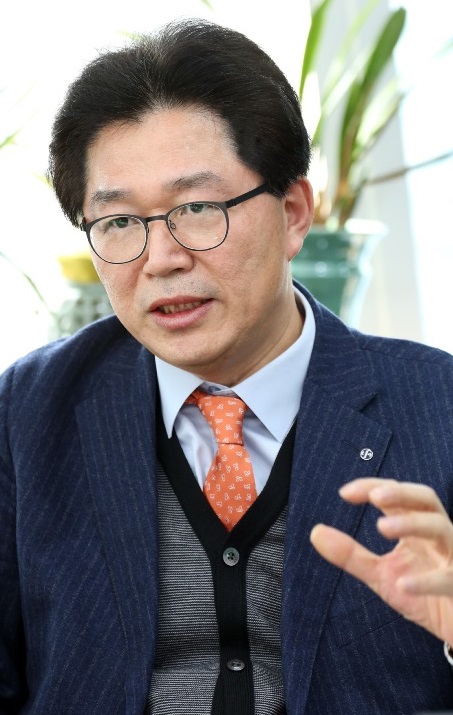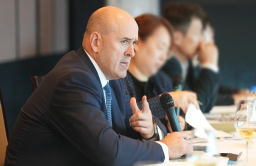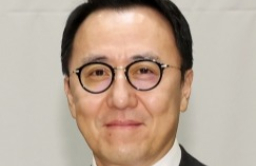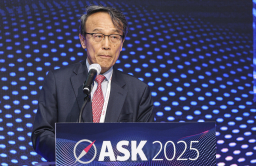-
KOSPI 2597.77 +4.10 +0.16%
-
KOSDAQ 717.64 -0.03 -0.00%
-
KOSPI200 345.80 +1.00 +0.29%
-
USD/KRW 1378 9.00 -0.65%
[Interview] Shinhan Life eyes low-volatility investments ahead of new accounting rule
[Interview] Shinhan Life eyes low-volatility investments ahead of new accounting rule
Mar 29, 2017 (Gmt+09:00)
2
Min read
News+
The life insurance arm of South Korea’s Shinhan Financial Group will allocate more than 90% of its assets under management to loans and bonds to earn stable interest incomes, and invest the remainder in stocks and alternative assets for higher returns as it is preparing for the adoption of a new accounting standard next year, said its chief investment officer.
 Shinhan Life Insurance Co. Ltd., which manages 27 trillion won ($24 billion) in assets, should apply the mark-to-market accounting for financial instruments under IFRS 9 from 2018 as a unit of a financial holding firm, three years ahead of other insurance companies.
Shinhan Life Insurance Co. Ltd., which manages 27 trillion won ($24 billion) in assets, should apply the mark-to-market accounting for financial instruments under IFRS 9 from 2018 as a unit of a financial holding firm, three years ahead of other insurance companies.
“To prepare for IFRS 9, we are cutting the proportion of beneficiary certificates and structured notes which have high volatility,” CIO Kibeom Bae said in a recent interview, adding that the move was aimed to minimize the impact of interest rate changes.
To make up for falling investment returns from its conservative portfolio, Shinhan will deploy up to 1.9 trillion won ($1.7 billion), equaling its equity capital, to alternative investments and overseas bonds, including US corporate and municipal debts and mortgage-backed securities.
“Among investment-grade US corporate bonds and municipal bonds are many long-dated blue-chip issues, and they offer higher yields than government bonds,” said Bae, a former head of Shinhan Bank’s investment banking division. “We will gradually reduce the proportion of government bonds which now account for 50% of our total assets under management.”
For alternative investments which are worth about 4 trillion won for Shinhan Life, it is considering investing in overseas secondary real estate funds and aircraft funds, and studying investments in buildings in major US and European cities.
At home, Shinhan Life is considering extending loans to rental housing projects and investing in LNG and solar energy power projects.
Bae forecast the interest rate gap between the US and South Korea to widen, saying rising household debts and aging population in South Korea are likely to force the Bank of Korea to hold off on interest rate raises. This will increase the importance of currency risk management for insurance companies, he noted.
Bae joined Shinhan Life in early 2015 as CIO.
By JiHoon Lee and Dongwook Jwa
lizi@hankyung.com
 Shinhan Life Insurance Co. Ltd., which manages 27 trillion won ($24 billion) in assets, should apply the mark-to-market accounting for financial instruments under IFRS 9 from 2018 as a unit of a financial holding firm, three years ahead of other insurance companies.
Shinhan Life Insurance Co. Ltd., which manages 27 trillion won ($24 billion) in assets, should apply the mark-to-market accounting for financial instruments under IFRS 9 from 2018 as a unit of a financial holding firm, three years ahead of other insurance companies.“To prepare for IFRS 9, we are cutting the proportion of beneficiary certificates and structured notes which have high volatility,” CIO Kibeom Bae said in a recent interview, adding that the move was aimed to minimize the impact of interest rate changes.
To make up for falling investment returns from its conservative portfolio, Shinhan will deploy up to 1.9 trillion won ($1.7 billion), equaling its equity capital, to alternative investments and overseas bonds, including US corporate and municipal debts and mortgage-backed securities.
“Among investment-grade US corporate bonds and municipal bonds are many long-dated blue-chip issues, and they offer higher yields than government bonds,” said Bae, a former head of Shinhan Bank’s investment banking division. “We will gradually reduce the proportion of government bonds which now account for 50% of our total assets under management.”
For alternative investments which are worth about 4 trillion won for Shinhan Life, it is considering investing in overseas secondary real estate funds and aircraft funds, and studying investments in buildings in major US and European cities.
At home, Shinhan Life is considering extending loans to rental housing projects and investing in LNG and solar energy power projects.
Bae forecast the interest rate gap between the US and South Korea to widen, saying rising household debts and aging population in South Korea are likely to force the Bank of Korea to hold off on interest rate raises. This will increase the importance of currency risk management for insurance companies, he noted.
Bae joined Shinhan Life in early 2015 as CIO.
By JiHoon Lee and Dongwook Jwa
lizi@hankyung.com
Yeonhee Kim edited this article
More To Read
-
16 HOURS AGO
-
 Korean InvestorsCarlyle CEO shares investment tips with Korean retail investors
Korean InvestorsCarlyle CEO shares investment tips with Korean retail investors18 HOURS AGO
-
 Leadership & ManagementMorgan Stanley stalwart Cho bows out after over 10 years at the helm
Leadership & ManagementMorgan Stanley stalwart Cho bows out after over 10 years at the helm20 HOURS AGO
-
21 HOURS AGO
-
 Shareholder valueKorean financial firms launch global IR blitz to woo foreign capital
Shareholder valueKorean financial firms launch global IR blitz to woo foreign capitalMay 21, 2025 (Gmt+09:00)




